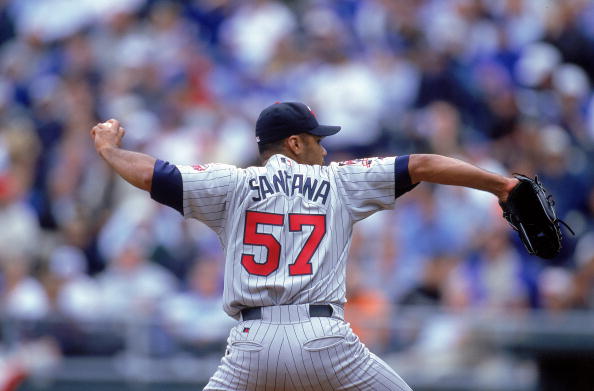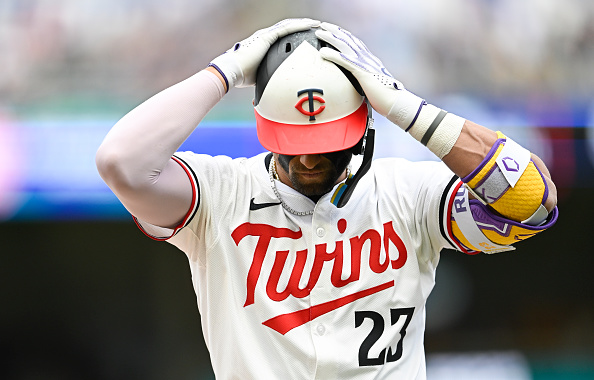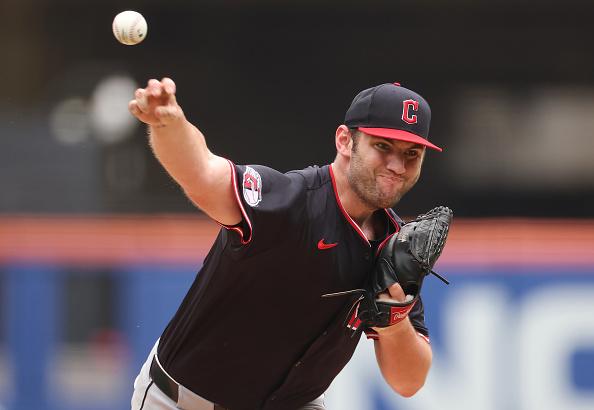Every year baseball fans debate who should make it into Cooperstown. There are some players who have fallen off the ballot and have basically been forgotten. This is the final part of a three-part series looking at the biggest Hall of Fame snubs at each position.
For this article, I will not be including players who have been snubbed for steroid use, character issues, or bans. I also will not be including players still on the ballot such as Andruw Jones or Scott Rolen as the writers still have a chance to get it right. So let’s take a look at the All-HOF Snub Team on the mound.
Be sure to also check out the other parts of this series: The Infield | The Outfield
Jim McCormick
There are plenty of players who played over 100 years ago who are forgotten. The stout right-handed pitcher from Scotland was a step above the other hurlers of those days. He only pitched for 10 seasons and retired at age 30 to care for his two children after his wife passed away. Over those 10 seasons though McCormick was an absolute workhorse. In his six-year peak (1879-1884) he started 365 games, completing 352 of them. Even with the incredible workload, McCormick pitched to a 2.23 ERA and a 1.086 WHIP. His 76.2 rWAR is the most by any non-Hall of Famer who is eligible and not connected to steroids or banned.
Tommy John
The man whose name is now synonymous with elbow surgery was a very good pitcher for a long time. John, before surgery, pitched for 12 years in the majors. For the 10 seasons right before ulnar collateral ligament reconstruction (1965-1974), John went 122-95 with a 2.94 ERA in over 2,000 innings. After feeling a “pop” in July 1974, John was told to rest. That didn’t work. So, on September 25, 1974, Dr. Frank Jobe replaced the pitcher’s ligament in his left arm with one from his right wrist. There is much more info on the recovery process here in a great bio by Michael Fallon.
Amazingly, John returned to pitch in 1976, and over the next six seasons, he had 99 wins and a 3.06 ERA in 184 starts. He also finished second in Cy Young Award voting twice. John went to the California Angels for a few years and eventually made his way back to the New York Yankees for the final four seasons of his career. He pitched for 26 years in the major leagues, started 700 games (one of only eight pitchers to do it), and ended with a 3.34 ERA and 288 wins. Touted as a soft-tossing lefty without a major league fastball and then facing an unprecedented surgery at age 31, there may be no one in the history of the game who has accomplished more when, by all accounts, he shouldn’t have.
David Cone
After making just 11 appearances in 1986 for his hometown Kansas City Royals, Cone was headed to New York to join the defending World Series Champions. He had a decent season in 1987, but the following year would be Cone’s coming-out party. In 1988, he went 20-3 with a 2.22 ERA and 213 strikeouts. He finished third in CYA voting that season and made the first of five All-Star appearances. Cone pitched well for the Mets with the help of his fanbase, the Coneheads. He led the NL in strikeouts in 1990 and 1991. He was on track to lead again in 1992 before being traded to the Toronto Blue Jays for Jeff Kent and Ryan Thompson at the trading deadline. Cone won his first ring for the Jays that year and headed back to the Royals for the 1993 season.
Cone set a career-high with 254 IP in ’93 and then in the strike-shortened year of 1994, he won the AL CYA. He was traded the following year to the Yankees and pitched in the Bronx for five more years winning four championships. Cone finished his career with five rings, a CYA, and was a 20-game winner twice. He is 26th on the All-Time list for strikeouts with 2,668 despite not reaching 3,000 IP. Cone won 194 games and had an ERA of 3.46. His World Series numbers are pretty impressive as well. Over five starts and 29 1/3 IP, he was 2-0 without allowing a HR.
Bret Saberhagen
The lanky righty might not have had the audacious total numbers as some, but he made them count when he pitched. In his first full season in the rotation, Saberhagen won the AL CYA in 1985 and led the Royals to their first World Series Championship at the ripe old age of 21. He was also WS MVP that year completing both of his starts including a Game 7 shutout. Despite a bump in the road in 1986, Saberhagen threw 250+ innings the next three years and won his second CYA in 1989 winning 23 and leading the league with a 2.16 ERA and 4.49 K/BB rate.
The usage seemed to catch up with him as he never threw over 200 innings again, but he was still effective on the mound. Over the next five seasons, two with the Royals, three with the Mets, his ERA wouldn’t be above 3.50. In 1994, Saberhagen’s control was a thing of beauty. He won more games (14) than he walked batters (13) and had a ridiculous 11/1 K/BB rate. Unfortunately, rotator cuff surgery would rob nearly three years of his career. While he made a brief comeback for the Red Sox in 1998 and 1999, his career was effectively over after that.
Although he didn’t have the total counting stats as many pitchers, he was pretty dominant. He has a ring, a WS MVP, and two CYAs. He is also is sixth among pitchers with 2,500 IP with a 3.64 K/BB rate just ahead of Mike Mussina, Roy Halladay, and Justin Verlander.
Johan Santana
While there are plenty of players who get dropped off the ballot because they didn’t have a great peak, there are also others who didn’t seem to play long enough. That is where Santana stands yet he was absolutely dominant for a nine-year stretch from 2002-2010. During that time he was 130-66 with a 2.90 ERA and averaged over a K/IP. He won AL CYAs in 2004 and 2006 and should’ve won in 2005. In 2006, Santana won the pitching triple crown, leading the league in Wins, ERA, and Strikeouts. But not only did Santana lead the AL in those categories, he led the majors. Aside from Shane Bieber in last season’s shortened campaign, only Dwight Gooden in 1985 has accomplished that since 1970 and only six pitchers aside from them have achieved it in MLB history.
Met fans will fondly remember Santana for tossing the only no-hitter in their franchise’s history on June 1, 2012. It was Johan’s final season in the majors, retiring at age 33. For his career, Santana’s 136 ERA+ ranks him tied for 10th All-Time among pitchers with 2,000 innings. He is tied with Christy Mathewson and Cy Young himself. If you throw in a 3.50+ K/BB rate that leaves Santana as one of six in major league history meeting that criteria. The others are Clayton Kershaw, Pedro Martinez, Max Scherzer, Young, and Halladay.
Check us out on our socials:
Twitter: @PTSTNews and @TalkPrimeTime
Facebook Page: Prime Time Sports Talk
Join our Facebook Group: Prime Time Sports Talk
Instagram: @ptsportstalk
Follow Johnnie Black on Twitter @jball0202
Main Credit Image: Embed from Getty Images








5 Responses